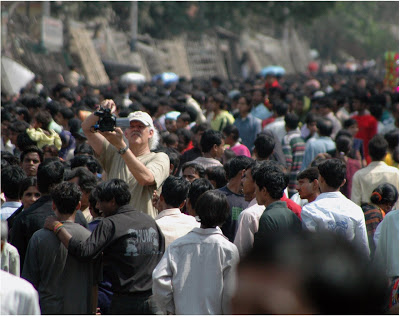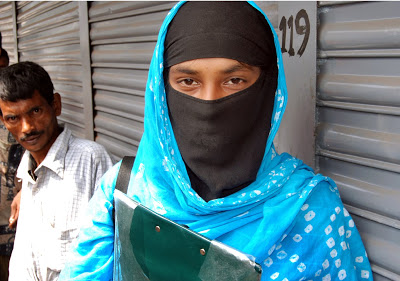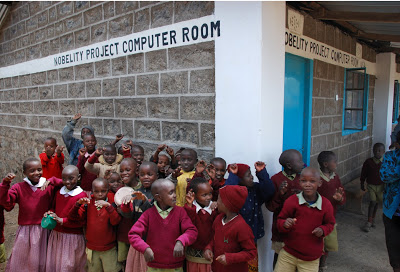One Peace at a Time: A film about a messed up world and how we can fix it.
By William Michael Hanks / The Rag Blog / June 2, 2009
See Willie Nelson Video, and a sneak preview Video of One Peace at a Time, Below. Also see Turk Pipkin, and a Brief History of the Documentary Form, by William Michael Hanks / The Rag Blog.
[‘One Peace at a Time: A film about a messed up world and how we can fix it.‘ A feature documentary film by Turk Pipkin. Produced by the Nobelity Project. One Peace at a Time is a sequel to Pipkin’s highly acclaimed Nobelity.]
One Peace at a Time documents Turk Pipkin’s global odyssey to find working solutions for humanity’s most urgent problems.
In the 1960s the issues that most concerned the activist community were civil rights and the Vietnam War. Many believed that we could make a difference by getting involved and making our voices heard. At that time the horizon of concerns did not go far beyond the landscape of domestic issues.
Now, confirming Marshall McLuhan’s insights, the media of television and the Internet have changed our worldview and our conversation. With a global perspective, the problems of our time threaten to overwhelm our sensibilities and defy attempts to gain traction against them. In an odyssey of faith, Turk Pipkin invested years of searching the world for antidotes to the threats against our survival.
Through interviews with nine Nobel laureates, ten non-governmental organization (NGO) innovators, one U. S. Congressman, and one musician-philosopher, One Peace at a Time provides a first-hand look at the projects that are working to make a better world. But Turk Pipkin, a Texas writer, actor and director, living in Austin, has done even more –- he has produced a work that represents the evolution of documentary production.
In his previous documentary Nobelity Turk Pipkin begins with Nobel Laureate Steve Weinberg speaking about the problems facing the world today. This began a journey that led to conversations with eight more Nobel Laureates around the world. As a father, Turk Pipkin was eager to engage the challenges that his children would face in coming years. In Nobelity he defines for us the significant problems of our time. But that led to something more — the participation of his wife, Christy, and his daughters, in a new project to find effective solutions to those problems.
In his sequel One Peace at a Time we see the solutions developed by those working on the front lines to leave a better world for future generations. The film opens with Turk in a train station in India. At about six feet six inches tall he is unmistakably a visitor on a road trip. And that is the form of the film. It is the most enduring of documentary forms — a road movie, a travelogue, but unlike any you’ve ever seen.
Carrying his camera he says: “There are so many layers that separate me from reality — but that morning I looked up from my camera and suddenly the problems were looking back at me — I wasn’t behind the camera anymore –- I was part of the picture.”
Ironically, it is the layers in the film that bring so much to its power. The foundation is its theme: the power of individual choices. Upon that is layered the pictures of the people and places which provide a sense of reality that is sometimes tragic and surprisingly, comic. On that is layered an artful music score providing context and mood. Over a multi-panel montage of children living in poverty among industrial waste and pollution Bob Dylan sings:
“Broken idols, broken heads,
People sleeping in broken beds.
Streets are filled with broken hearts.
Broken words never meant to be spoken,
Everything is broken.”
The music together with the content works to evoke worlds of meaning as we hear “Peace Train,” “The Weight,” and “Better Way” — songs of an earlier generation seen with the children of a new generation dramatize the continuing struggle for justice, peace, and the dignity of life.
Overlaying that is the first-person descriptions of the success of those who are leading the way to provide solutions. And, upon that is the voice of guide and narrator, Turk Pipkin, who provides perspective for the film. The final layer is the reflexivity, the self awareness, that engages us more fully in the theme — we, as the audience, are aware of our role.
As we travel with Turk through the slums of India, Africa, and Bangladesh we see first-hand the conditions that imprison children in seemingly unalterable poverty but as Turk leads us on a journey of hope we begin to see that, if we choose, we can make a difference — each of us can make the world better.
Back in Texas, in a chess game with Willie Nelson, the importance of our choices is seen through the moves they make on the chessboard. Willie says: “You know what to do, right and wrong is not that hard, its just what you choose to do.” The Nobel Laureates and NGO leaders tell us more about the world’s problems and show us that we can change the course of history when we choose to act.
“What you do, where you are, is of significance.”
Desmond Tutu, Nobel Peace Prize“There is nothing magical about change. It’s getting up off your ass and caring enough to take the first steps to contribute to change on an issue you care about.”
Jody Williams, Nobel Peace Prize“Even the poorest of the poor person has enormous potential. If you decide where you want to be, and I decide where I want to be … we’ll be there.”
Muhammad Yunus, Nobel Peace Prize“We’re doing harm. Our decisions are clearly not made with our descendants in mind.”
Steve Weinberg, Nobel Prize in Physics“There are twenty five million children living in orphanages … a million more each year. In 2006 there were only 3,332 adoptions in India.”
Caroline Boudreaux, Founder, The Miracle Foundation
Turk tells us that he didn’t know what to expect when he visited the orphanages in India but smiling, he says that what he found was love and joy. That hopeful tone resonates throughout the film. There is precious little to smile about in media these days but the sight of those children singing, laughing, and learning, undeterred by conditions of poverty and difficulty, brought a big smile to my face too.
However, it is not a film marred by a Pollyanna vision. The reality of how the world is failing to provide for even the basic needs stated in the United Nations “Rights of the Child”: clean water, adequate nutrition, health care, education, a stable loving environment, and conditions of freedom and dignity, is the organizing structure for the film.
Six million children die of hunger each year. Sixteen thousand die of hunger each day. Twelve children die of hunger each minute. In the time it takes you to read this paragraph, six children died of hunger. While you process that –- one more died. How could that be possible? One more.
That is one example of how One Peace at a Time brings home the big numbers to a personal level. Turk Pipkin leads us further into an almost apocalyptic landscape as he attends the convention to ban cluster munitions in Oslo, Norway.
“A cluster munition is essentially a large container that opens up in mid-air and spews out hundreds of individual bomblets. So if you use these anywhere near civilian areas you’re almost guaranteed to kill and injure large numbers of civilians. To make matters worse, many of these individual bomblets — hundreds at a time — don’t explode on contact. Instead they function like anti-personnel land mines — they keep killing weeks, months, and decades later.
Steve Goose, Human Rights Watch
The United States is the most prolific user and exporter of these munitions — we also refuse to sign the treaty to ban them. This led Turk to his Congressman, Lloyd Doggett, to ask how citizens can influence legislation on this and other important issues.
“In terms of the money that we appropriate every year, fifty-five cents of every dollar went to military expenditures. We spend enough in one week in Iraq to fund the college education of over a million students — we could be putting people on the dean’s list instead of the casualty list. Just electing someone is not enough. You have to have an informed public movement that really cares about how our budget is allocated.”
Lloyd Doggett, U. S. House of Representatives
Not satisfied to merely show what we can do, Turk Pipkin put his own blood and treasure on the line as well. He broke his leg in the Grand Canyon while filming a sequence on global warming. He sponsored a child in India through The Miracle Foundation, provided micro-financing to a small businesswoman in Africa through Kiva.org, raised money for a well to deliver clean water to an Ethiopian village, and through The Nobelity Project, sponsored a computer classroom in Kenya
One Peace at a Time is not only a compelling look at what is being done to solve the problems of our time but shows the power of our choices to make a difference. It is also an outstanding example of the evolution of the documentary form. The most unexpected thing about the film is the humor, joy, and hope that it delivers. This isn’t a doomsday prophecy — it is an inspiring roadmap to a better world.
One Peace at a Time home: The Nobelity Project
Turk Pipkin Website: TurkPipkin.com
Choose to Act
This is a road movie about choices. One Peace at a Time calls on us to choose a project and get engaged in the solution. All of the following organizations are making a difference in the lives of people around the world. At a time when many investments are showing negative returns, these are some of the best investments you can make.
- The Miracle Foundation
The Miracle Foundation provides for the needs of orphans in India. - A Glimmer of Hope
Glimmer of Hope Foundation has funded more than 3,000 clean water, health care, and classroom projects in rural Ethiopia. - Architecture for Humanity
Creating lasting change in communities and a more sustainable future through design - Kiva.org
The world’s first person-to-person micro-lending website. - UCP Wheels for Humanity
Helping more than 40,000 people with disabilities in more than 66 developing nations. - CARE.org
Fighting global poverty with special emphasis on women. - FreeRice.com
Every time you play, you donate 20 grains of rice to the World Food Program. - StopClusterMunitions.Org
Save children’s lives – Join the campaign to ban cluster bombs! - Mobile Loaves & Fishes
Provides for people in need on the streets of Austin, San Antonio, New Orleans, Providence, and Nashville. - Meals on Wheels & More
Delivers hot, nutritious meals in the Greater Austin area. - The Kallari Collective
A coalition of Amazon artists and organic cocoa producers. - Nyaya Health
Working for health equity in rural Nepal. - SIDAREC.org
Working with the youth from the slums in Nairobi - The Green Belt Movement
Provides income and sustenance to millions of people in Kenya by planting trees. - Katha Schools
71 schools in India’s slum communities. - The Hole in the Wall
Creating inclusive educational solutions that address all sections of society. - Grameen Bank
Providing credit to the poorest of the poor in rural Bangladesh. - Sustainable Biodiesel Alliance
Promoting sustainable Biodiesel practices. - Clinton Global Initiative
Turk Pipkin and the Nobelity Project support these initiatives.
[William Michael Hanks has written, produced and directed film and television productions for the National Aeronautics and Space Administration, The U. S. Information Agency, and for Public Broadcasting. His documentary film The Apollo File won a Gold Medal at the Festival of the Americas. Having experienced the challenges and the evolution of the form in his own work, his view from that lens brings into focus both the content and technique of One Peace at a Time. William Michael Hanks lives in Nacagdoches, Texas.]
Turk Pipkin: “I’m headed to Kenya in a week to purchase land for the high school for 400 students that we’re going to build near this primary school. Education in the area currently ends after 8th grade, and we’ve made a big commitment to help change chat. The Nobeliy Project has raised about 20k of the 100k we need for the school. We’re accepting donations at nobelity.org.”
Willie Nelson for One Peace at a Time
About One Peace at a Time.
One Peace at a Time is an inspiring feature documentary highlighting solutions to some of the world’s most pressing problems. The film includes the insights of Nobel Peace laureate Muhammad Yunus, Nobel Physicist Steven Chu, (Barack Obama’s Secretary of Energy), Dr. Helene Gayle (CEO of CARE, International), American legend Willie Nelson and many others.
The film follows director Turk Pipkin’s five-continent, two-year search for a better way ahead. Pipkin sought the answer to one basic question: Can we provide basic rights — water, nutrition, education, healthcare and a sustainable and peaceful environment — to every child on earth?
The solutions Pipkin chronicles include the model Indian orphanages of The Miracle Foundation, family planning initiatives with Thailand’s Mechai Viravaidya, Ethiopian water projects with A Glimmer of Hope, and Architecture for Humanity’s global design challenge for communities in need in the Himalayas, the Amazon and the slums of Nairobi.
In Banngladesh, Pipkin met Muhammad Yunus, the “Banker to the Poor” whose pioneering work in microfinance has led tens of millions of people out of extreme poverty. “We must be pilots,” Yunus told Pipkin. We must know where we are going and lead the world where we want to go.”
One Peace at a Time is Pipkin’s sequel to his highly acclaimed documentary Nobelity, which Esquire Magazine called, “Nine ways to save the World.” While Nobelity looked at problems through the eyes of nine Nobel laureates, the new movie focuses on solutions that every person can be a part of.
“People are hungry to play a part in creating a better world,” says Pipkin. “I hope this film will inspire large numbers of people to accomplish great things in the world and in their own lives.”
The film is produced by the Nobelity Project, a 501c3 nonprofit working for a more peaceful and sustainable world. Proceeds from the film support the Nobelity in Schools education program and the nonprofit’s development work in Kenya, Ethiopia and elsewhere.
In its own words, “The Nobelity Project collaborates with Nobel laureates and other inspiring leaders to provide reliable information and innovative thinking on pressing global problems and solutions that work. Combining professional filmmaking with a nonpartisan, nonprofit education program, our work reaches a broad cross section of people interested in making a difference.”
One Piece at a Time will have a national release in September and October this year. It is being distributed by Monterey Media and will play in theaters around the country and there will also be hundreds of screenings in community centers, churches, on campuses and in private homes. Anyone who wants to sponsor a screening can contact nobelity.org.
Actor, writer and filmmaker Turk Pipkin has had a long career in books, television and film. He is the writer and director of the award-winning documentary Nobelity. As an actor, he appeared in the feature films Friday Night Lights, The Alamo and Scanner Darkly. On HBO’s The Sopranos, Turk played the recurring role of Janice’s narcoleptic boyfriend, Aaron Arkaway. He is the author of ten books including the New York Times best-seller, The Tao of Willie, co-authored with Willie Nelson.
One Peace at a Time – Sneak Preview





















fabulous project(s0 – fabulous article